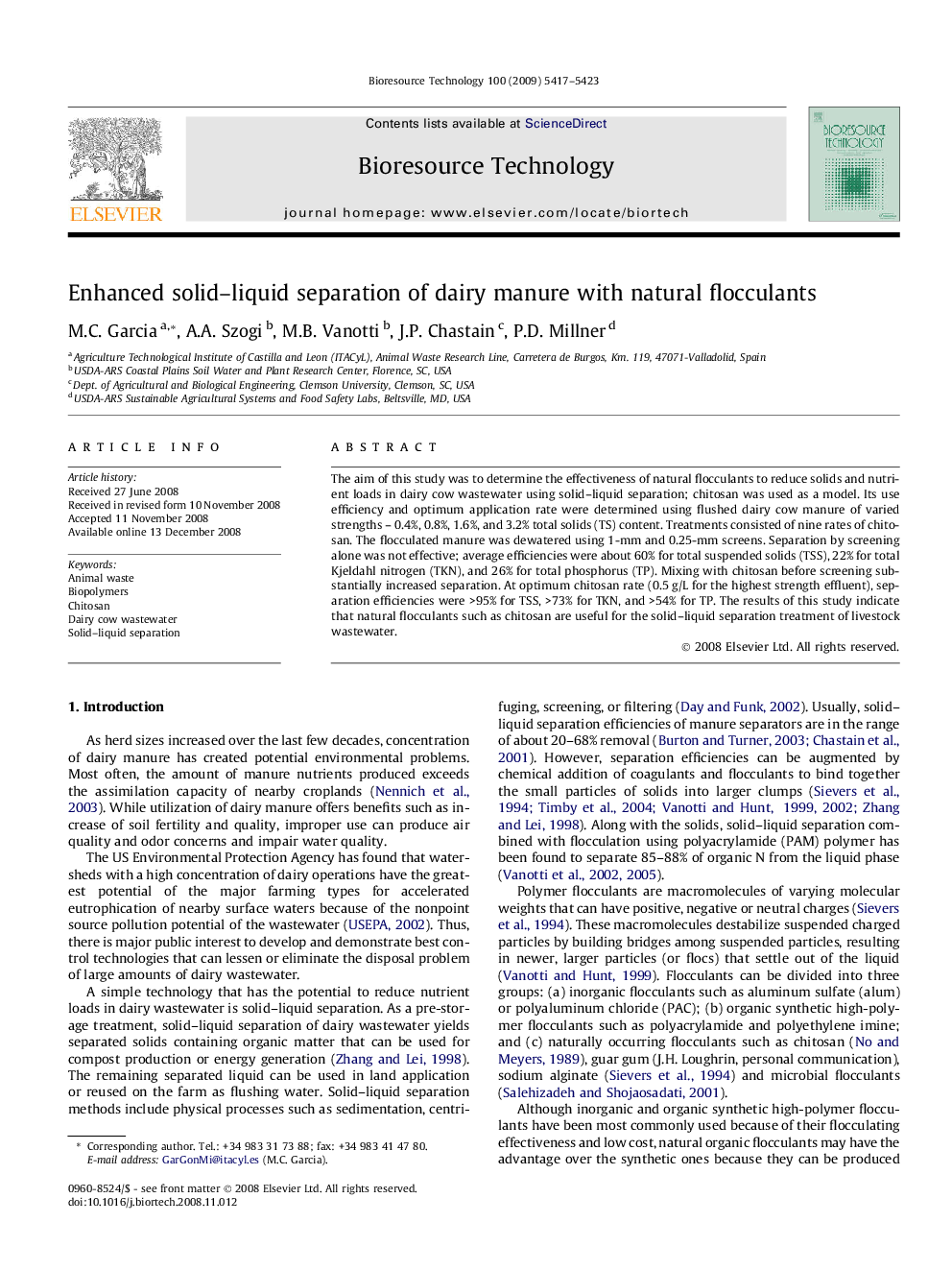| Article ID | Journal | Published Year | Pages | File Type |
|---|---|---|---|---|
| 683987 | Bioresource Technology | 2009 | 7 Pages |
The aim of this study was to determine the effectiveness of natural flocculants to reduce solids and nutrient loads in dairy cow wastewater using solid–liquid separation; chitosan was used as a model. Its use efficiency and optimum application rate were determined using flushed dairy cow manure of varied strengths – 0.4%, 0.8%, 1.6%, and 3.2% total solids (TS) content. Treatments consisted of nine rates of chitosan. The flocculated manure was dewatered using 1-mm and 0.25-mm screens. Separation by screening alone was not effective; average efficiencies were about 60% for total suspended solids (TSS), 22% for total Kjeldahl nitrogen (TKN), and 26% for total phosphorus (TP). Mixing with chitosan before screening substantially increased separation. At optimum chitosan rate (0.5 g/L for the highest strength effluent), separation efficiencies were >95% for TSS, >73% for TKN, and >54% for TP. The results of this study indicate that natural flocculants such as chitosan are useful for the solid–liquid separation treatment of livestock wastewater.
